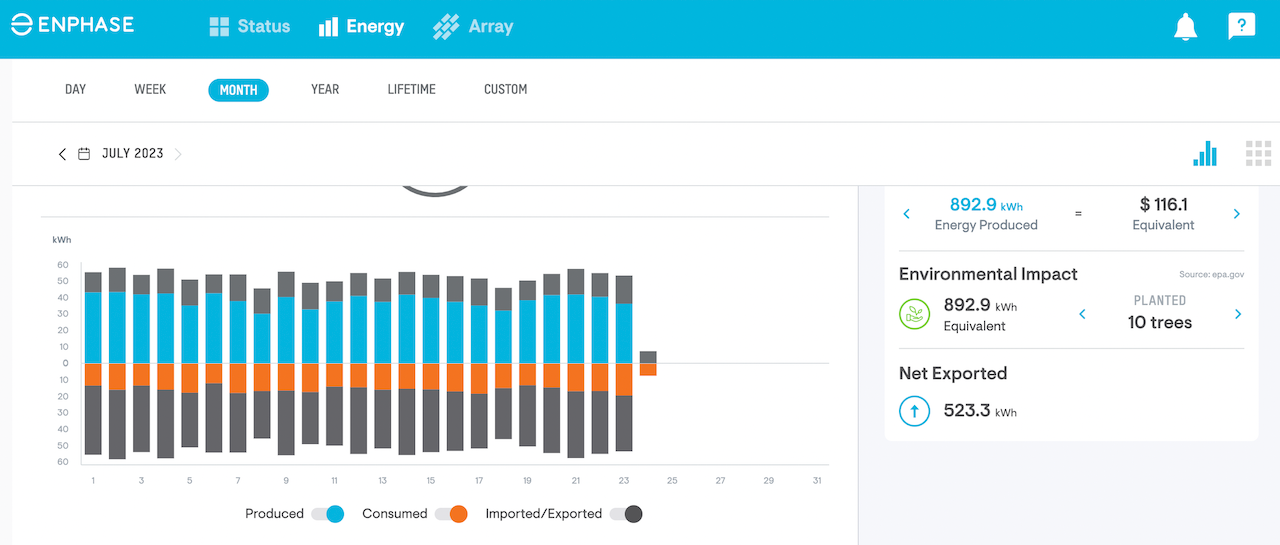Architecture
Trailblazers '23: Pearl Homes Aims At Housing's Three-Headed Hydra
Marshall Gobuty's Pearl Homes game plan is to ramp up an enterprise scale capability platform – using the net zero, LEED, solar-battery-powered blend as a scaleable ingredient brand -- for housing as a solution.

Stuart Miller told me in so many words that homebuilding's constitutional resistance to change and progress is a myth.
Innovation and applied brilliance happen everyday in residential construction and real estate," the Lennar chairman and co-CEO said. "Fact is, a lot of the work is going on in little pockets, labs, r&d centers, testing grounds in every corner of the industry across the nation. Some of this innovation work is disruptive, it just hasn't fully broken out yet and transformed how we work."
Miller's observation, circa mid-2015, is as true today as it was then.
True as well is that residential real estate, development, and building's "first principle" challenge axis today is identical to was back then, only intensified across all three key parts of the axis of crisis.
- Attainability ... i.e. we're in history's "worst affordable market." This goes for ownership and renting.
- Sustainability (net carbon neutral) ... i.e. energy costs and fossil fuel use impacts spool upward
- Resiliency ... the destructiveness of natural disasters impacting where we live is climbing.
The Pocket: Southwest Florida
It's that three-headed hydra of an axis that holds housing's hardest, most chronic, and most stubborn challenges, and it's that axis – attainability, sustainability, and resiliency – that Pearl Homes founder and managing partner Marshall Gobuty has fixated on as he developed, fought for, nurtured, and realized exactly the kind of disruptive innovation "pockets" Lennar's Stuart Miller says are going on in housing across the nation.
Pearl Homes earlier this year opened its vaunted Tampa, FL-area Hunters Point Homes & Marina, an 86-home community of net-zero plus, LEED certified, solar- and battery-powered smart homes to considerable fanfare.
At the time of the project's 2018 unveiling, Fast Company staffer Adele Peters wrote:
The small houses, designed with help from the Florida Solar Energy Center, a research institute at the University of Central Florida, will be LEED-certified and ultra-efficient. They’ll also be essentially hurricane-proof: Carbon fiber in the building materials helps the houses meet the standard for a Category 5 storm (by law, the builders only had to meet a Category 3 standard). And if a storm takes out the electric grid, the solar panels and batteries can keep the power on in the neighborhood after the storm passes." – Fast Company
The buzz got louder after a grueling, white-knuckle "discovery lab" investment in a low-slung warehouse Palmetto, FL, where Gobuty's team worked with the U.S. Department of Energy's (DOE) Zero Energy Ready Home program and the Florida Solar Energy Center (FSEC), the University of Central Florida's energy research institute, to build a prototype home, stress-test its structure and systems, and record the data to see how it would fare against net zero, HERS, and other energy performance standards.
In the warehouse r&d setting, the building science of the Pearl net zero home proved itself through 18 months of measurements. But it was not simply a pioneering home Gobuty set out to design, engineer, build, and finish. His real aim is scaleability, a system, a working, repeatable model whose success on the ground attracts both capital and local and national zoning and taxation support. It's the only way to navigate a trifecta of attainable, sustainable resilient homes. Developers broke ground at Hunters Point in May 2021, and vertical construction began after about six months of infrastructure implementation.
A local business news outlet noted in February:
Pearl Homes President and Founder Marshall Gobuty says the community of 86 solar-powered, net-positive homes will be the first LEED platinum LEED Zero community in the U.S when completed. The certification, the highest level of LEED certifications, is donned by the US Green Building Council.
In the simplest terms, the homes generate more power than tenants or owners consume without a carbon footprint.
The home runs on solar panels that are connected to a huge Sonnen battery. It’s a never ending cycle of powering up in the morning through absorption of power collected by the panels during the day. Then at night the battery clicks on and runs the home. The energy that doesn’t get used during the day is used at night, so, Gobuty says there’s never any waste." - Amanda Postma, Business Observer
Still, fanfare aside, what got Gobuty to where he and the Pearl Homes team where they are today is choosing fearlessly to play small-ball through what many regard as an endless battle among mutually-exclusive forces.
Business Observer reporter Postma adds:
Gobuty ... says affordable housing has to be part of this [net zero] trend going forward, though he recognizes market and support isn’t there — yet. “You shouldn’t have to be rich to live in a sustainable home,” he says. “It should have no connection.”
But until a solution navigates the capital, policy, building technology, and community planning matrix – i.e. who ultimately pays for homes to be attainable, sustainable, and resilient? – affordability and sustainability may not ought to cancel one another out, but they do.
As an aside for comparison, Tesla research and development expenses for the 12 months ending June 30, 2023 were $3.257 billion, a 12.97% increase year-over-year. Now, doubters who believe that housing's solutions for attainable, sustainable, resilient homes and communities are a fool's errand should only consider what such committed investment in such solutions might look like in dollars, political will, and collaboratively applied brilliance, the kind that Gobuty is now modeling in the Hunters Point "collaboratory" setting.
I think of myself as the best Mr. Potato Head player in the world," quips Gobuty. "I can take the components and bring them together. I don't invent them. I'm not inventing, like how to build a great home. I'm bringing the pieces together. And that's why the scalability is something like I'm going to invent the battery and then I've got to figure out how solar panels connect with it. We're putting them together and and we've proven that we can do that. And we see how we're able to do that on a much bigger scale."
A McKinsey analysis this week lays out a five-point action plan CEOs might take to future-proof their businesses via a net zero operational strategy.
- Accelerate capital deployment with a private-equity mindset
- Play offense through a sustainable value creation strategy
- Go beyond net zero
- Build the partnership and ecosystem muscle
- Aggressively reskill leadership teams, boards, and frontline workers
Gobuty's Mr. Potato Head metaphor applies not just to the vertical structure, but ultimately to the community, to – as McKinsey mentions – the partnership and ecosystem to influence capital and policy change, and to the frontline and leadership talent teams he believes are entirely capable of slaying the three-headed hydra. His game-plan is to ramp up an enterprise scale capability platform – using the net zero, LEED, solar-battery-powered blend as a scaleable ingredient brand – to develop single-family for-sale, multifamily, 30-unit multifamily workforce, and single-family rental communities as a solution.
Here are a few highlights from our conversation with Gobuty.
On Hunters Point's Ongoing Learning Lab

We call our 20 or so homes with owners in them now a fleet. So we are in our construction office. We've got the M phase homes, the inverter, computer up on the wall and a big 50 inch screen. And we also have every one of the homes up. We monitor like where it's a central system, a center where we're monitoring the use and every home so every day … even though the homeowner may not pay attention to it."
Resident and community engagement

With an app on the phone you can see your consumption. You can see how much you generated you can see what you took from the grid, you can see what you put back to the grid. It's so exciting to see how much power you generate.
Owners feel that. There's a feeling of pride of self generation, because we're in a place where we have the ability to have clean energy. We've spent so much energy on the house itself on the performance of this house that has solar panels, with the battery, and having no utility, and having zero carbon footprint or a positive carbon footprint. But then you get the feeling and you actually see it on your phone."
On the Future Of Housing Solutions
I want to make a difference in the world because I think that's just a great thing for me to leave. I just want to do that. For younger people – millennials – they look at this as this needs to be done. To them, it's 'you should be doing this and every other home builder should be doing it. So that is who we brought in. We've taken the average age down 20 years from the beginning of the project. They get it. They get it faster than we would. They understand that it shouldn't be a question. They love that we're doing it. Some of them will post on their own social network success at the community, and on their own personal like, so that gives that shows they have pride to work with us. So that's something great and that's something I think, really again happened organically. We've come together as a group, much more of a team than historically have done in the past."
MORE IN Architecture
Design-Estimating Disconnects Cost Builders Time And Margin
Former builder-operators Brandon Pearson and Marcus Gonzalez share what’s broken—and how connected teams can win now and in 2030.
How Missing Middle Housing Wins Approval And Works
Architect and planner Dan Parolek coined the term “missing middle housing.” His firm’s projects prove that thoughtful design, political navigation, and local momentum can overcome entrenched zoning resistance.
Faster Builds, Better Margins: The ROI On Right-The-1st-Time Velocity
Inside the digital transformation of homebuilding: How integrated teams, shared data, and AI are turning velocity into a high-stakes profit advantage.
